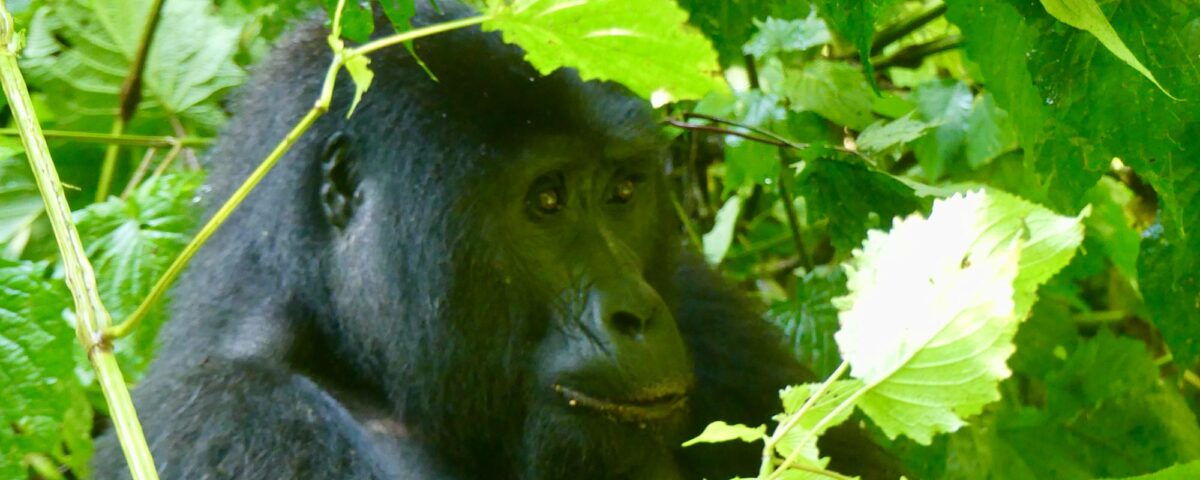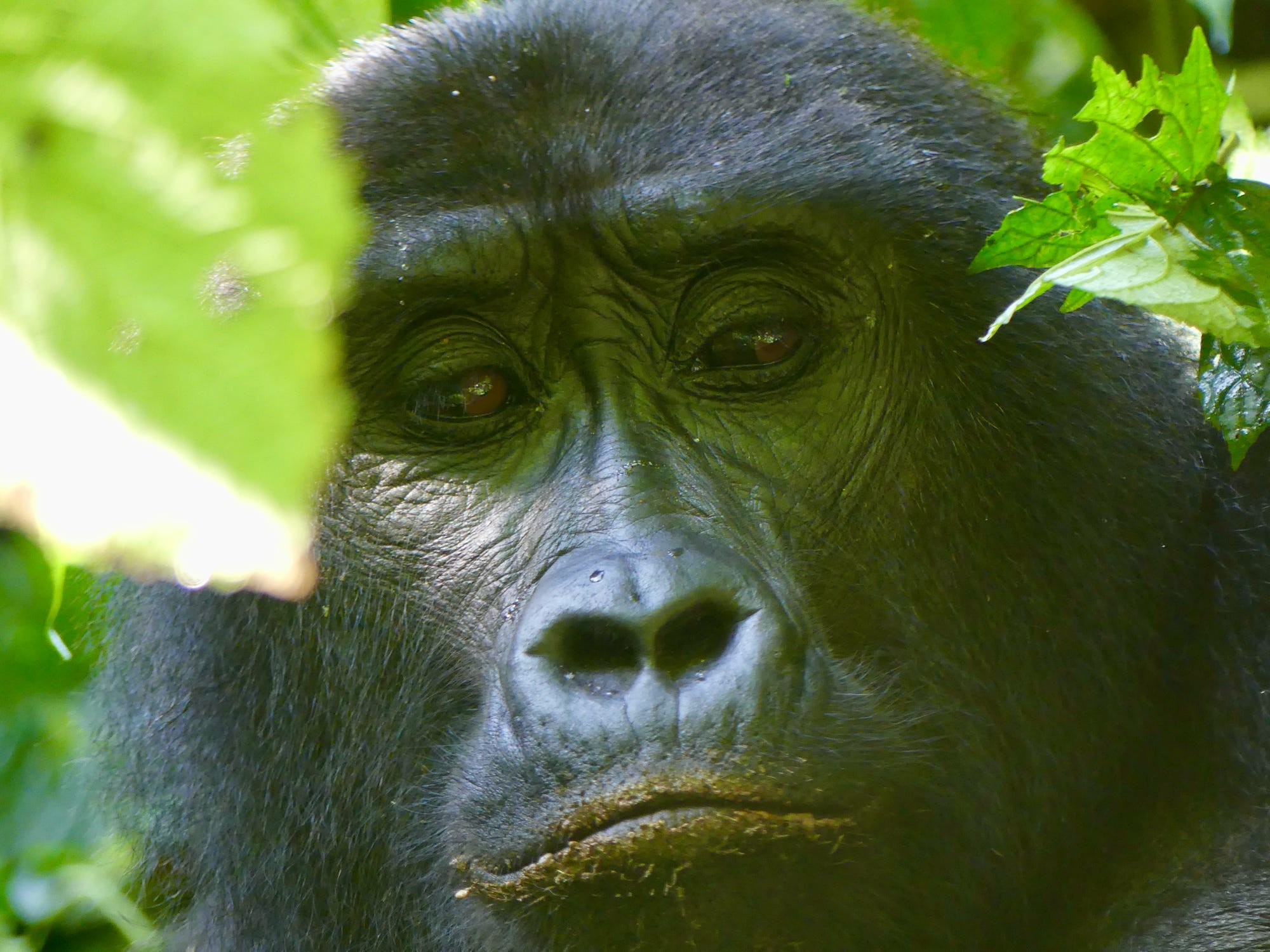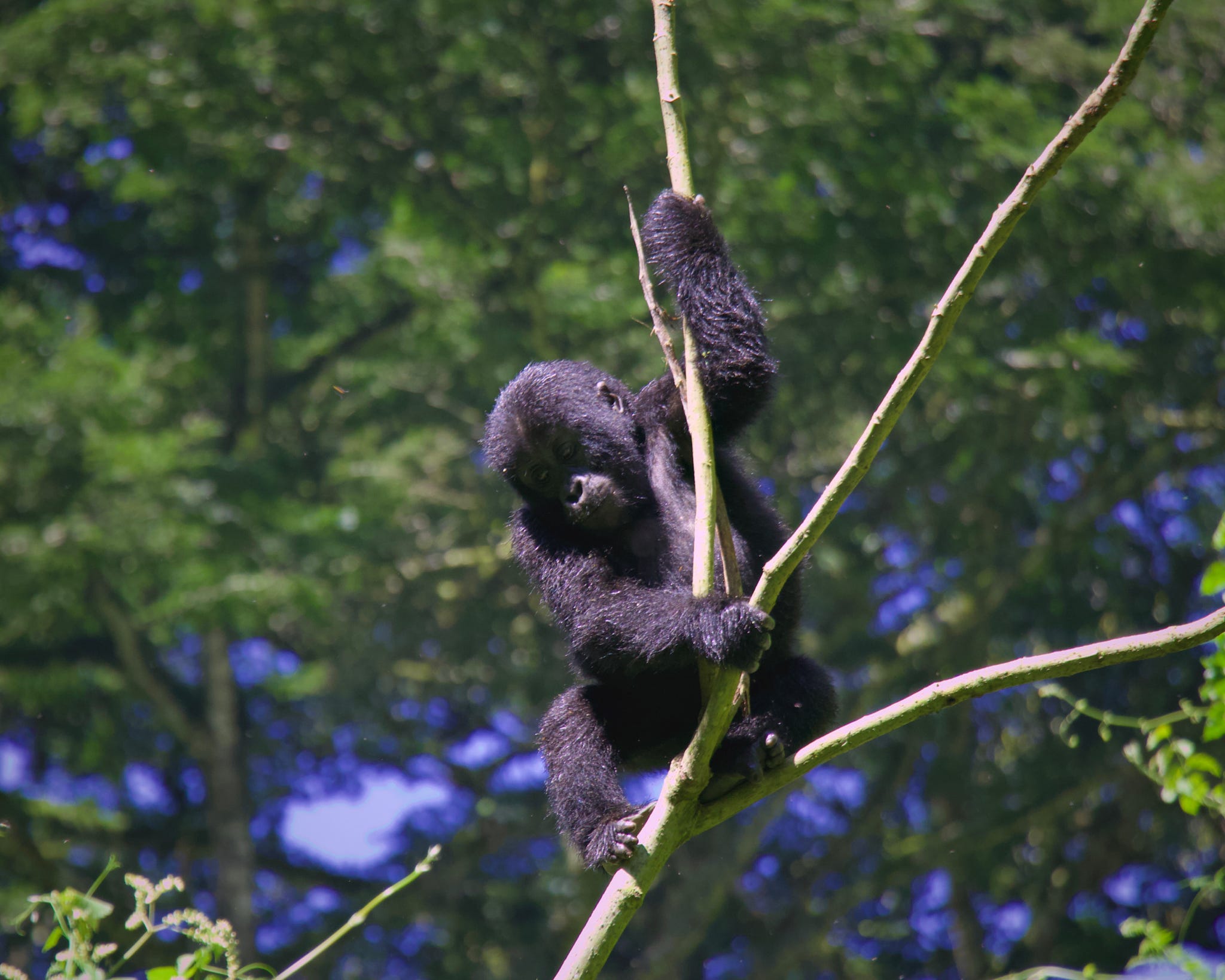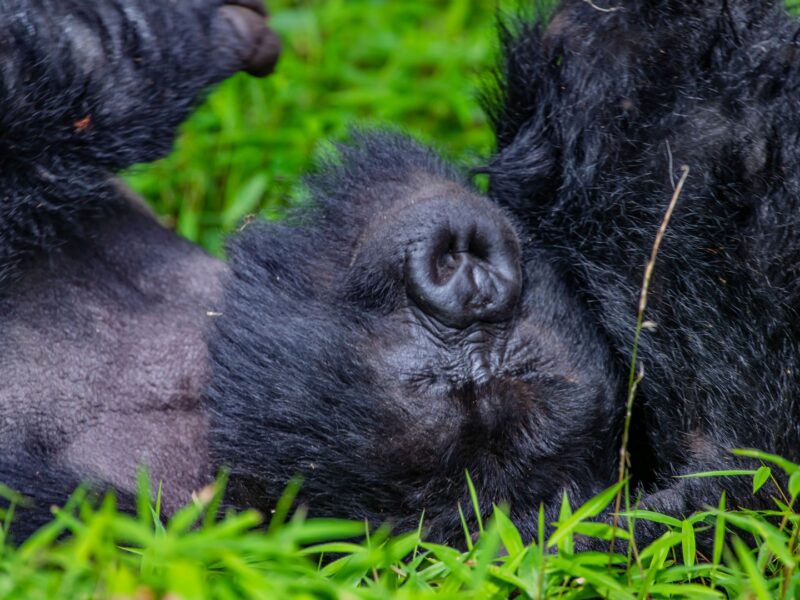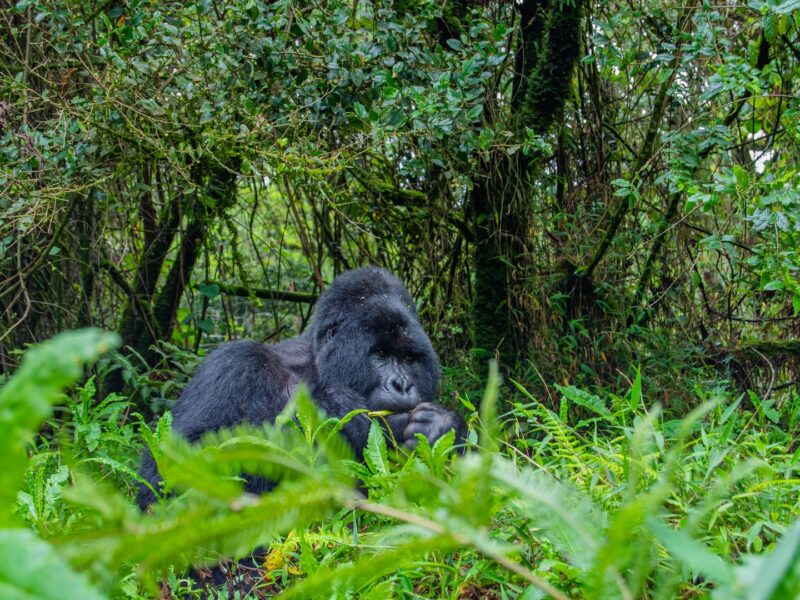
What Is the Difference Between Gorillas and Chimpanzees?
July 22, 2025
Are Gorillas Dangerous?
July 22, 2025How Many Mountain Gorillas Are Left in the World?
There are approximately 1,063 mountain gorillas left in the wild.
According to the latest Census, the number of Mountain Gorillas is steadily growing and increasing. These critically endangered primates…
These critically endangered primates live in two remote regions of East-Central Africa: the Virunga Massif spanning parts of Uganda, Rwanda, and the Democratic Republic of Congo and Bwindi Impenetrable National Park in southwestern Uganda.
Unlike other gorilla subspecies, mountain gorillas cannot survive in captivity.
Their future depends entirely on the continued protection of their natural habitats.
Where Do Mountain Gorillas Live?
Mountain gorillas inhabit high altitude tropical rainforests, usually between 2,200 and 4,000 meters above sea level.
The two main populations are found in the Virunga Mountains, which include Mgahinga Gorilla National Park in Uganda, Volcanoes National Park in Rwanda, and Virunga National Park in the DRC, and in Bwindi Impenetrable Forest, a UNESCO World Heritage Site in Uganda.
These forests offer the thick vegetation and mild climate that mountain gorillas need to thrive.
Why Are Mountain Gorillas Endangered?
Mountain gorillas face numerous threats, the most serious of which is habitat loss.
As human populations expand, forests are cleared for farming, settlements, and infrastructure. This reduces available habitat and leads to dangerous encounters between humans and gorillas.
Another major threat is disease. Because gorillas share around 98% of their DNA with humans, they are highly vulnerable to respiratory infections and viruses transmitted by people. Even a common cold can be deadly to a gorilla.
Poaching, while not usually targeting gorillas directly, still harms them through snares and traps set for other animals. Political instability in parts of their range, particularly in the DRC, also endangers both conservation staff and the gorillas themselves.
How Are Conservation Efforts Helping?
The increase in mountain gorilla numbers is considered one of the greatest conservation success stories in recent decades.
Protected areas like Bwindi Impenetrable National Park and the Virunga Massif have been at the center of this progress. Anti-poaching patrols, strict gorilla trekking regulations, and community-based tourism initiatives have all contributed.
By supporting Uganda gorilla trekking tours with trusted operators like Ngeye Tours & Travel, you directly fund conservation and local development, ensuring that both gorillas and communities benefit.
While the mountain gorilla remains endangered, its future is more hopeful today than ever before. Seeing them in the wild is not just a life changing experience it’s a chance to support their survival.
What Has Helped the Mountain Gorilla Population Recover?
A few decades ago, mountain gorillas were facing extinction, with population numbers dipping below 250 individuals in the 1980s.
Today, their steady growth is due to decades of collaborative conservation work. The success story is rooted in a number of essential efforts that span across nations and communities.
Mountain gorillas depend on intact, undisturbed forests for food, nesting, and safety. In Uganda, Rwanda, and the DRC, national parks and conservation zones like Bwindi Impenetrable Forest have been legally protected, and reforestation efforts continue in buffer zones.
Dedicated ranger patrols, snare removal teams, and surveillance have drastically reduced poaching. While mountain gorillas are not usually targeted for bushmeat, they have often fallen victim to traps set for other animals.
Gorilla tourism particularly through regulated Uganda gorilla trekking safaris has generated revenue for both conservation and local communities. In Uganda’s Bwindi Impenetrable National Park, permits are limited, groups are small, and all visits follow strict rules to ensure minimal disturbance.
What Are the Biggest Threats to Mountain Gorillas?
Despite the progress, mountain gorillas remain endangered and continue to face several critical threats. Encroachment from agriculture, settlement expansion, and deforestation shrink gorilla habitat and increase human wildlife conflict.
Because gorillas share about 98% of their DNA with humans, they are highly susceptible to human diseases like flu and COVID-19. Even a common cold can be deadly to them.
In regions like eastern DRC, political instability poses dangers to both conservation workers and wildlife. Shifting weather patterns and changing vegetation due to climate change can disrupt food availability and gorilla movement.
Though mountain gorillas are rarely hunted directly, they are often injured or killed by snares intended for other wildlife.
Why Is Bwindi Impenetrable Forest So Important for Gorilla Conservation?
Bwindi Impenetrable National Park in southwestern Uganda is home to about half of the world’s remaining mountain gorilla population.
This ancient forest believed to have survived the last Ice Age is a biodiversity hotspot, hosting over 120 mammal species, 350 bird species, and countless rare plants and insects. Its dense, tangled terrain provides the ideal environment for mountain gorillas to feed, nest, and raise their young.
Bwindi also offers one of the most accessible and rewarding gorilla trekking experiences in Africa. With over 20 habituated gorilla families spread across four trekking sectors Buhoma, Ruhija, Nkuringo, and Rushaga travelers have many options for exploring this pristine wilderness.
At Ngeye Tours & Travel, we specialize in creating customized Uganda gorilla tours that allow you to immerse yourself not just in the forest, but in the culture, history, and conservation legacy of Bwindi.


